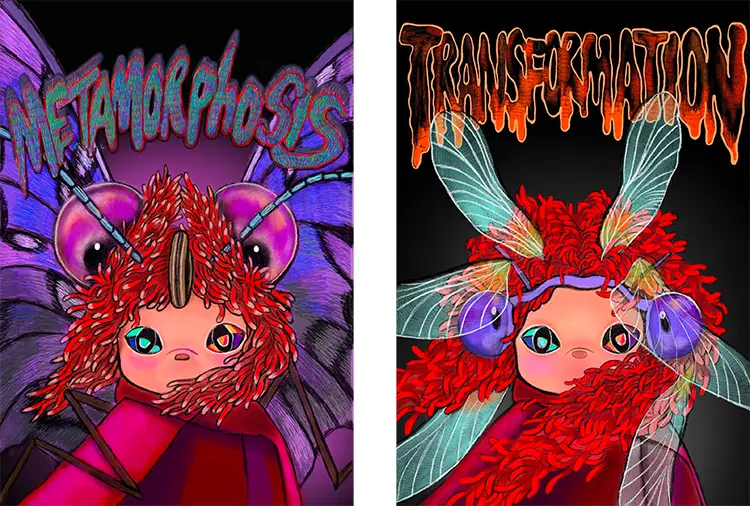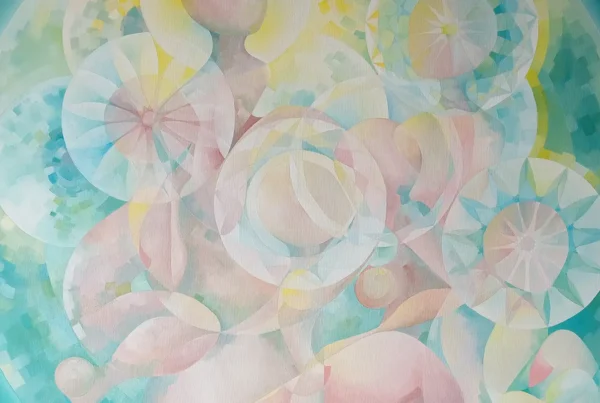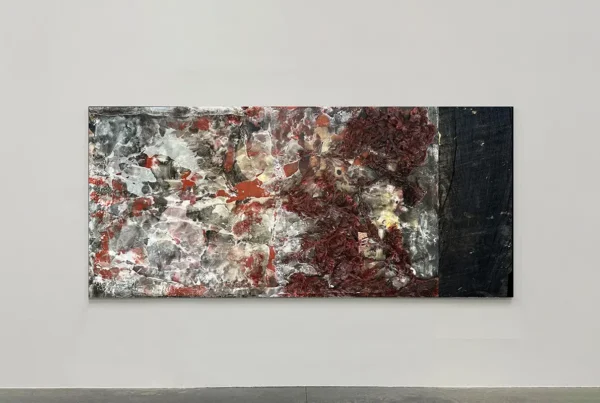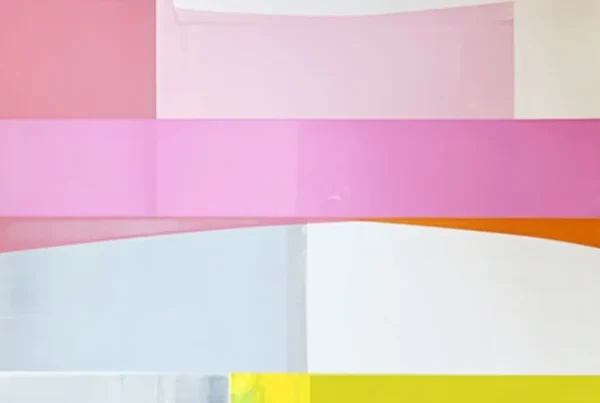“The microscopic world shows us that even the smallest things hold endless stories about how everything’s tied together.”
A Science of Seeing: Where Chemistry Becomes Canvas
The microscopic universe that most people overlook becomes a boundless source of visual storytelling in the hands of Ann Petite. A full-time chemist based in Hong Kong, she turns the act of scientific observation into a deeply creative pursuit. Her dual identity as both scientist and artist shapes a distinctive practice that reveals the unseen beauty in life’s tiniest structures. Cells, microorganisms, and molecular reactions are not just data points in her world—they are the building blocks of a living aesthetic that pulsates with energy and intention.
Rather than simply replicating what she observes through her microscope, Ann reimagines and reinterprets these hidden forms. Each piece emerges through a process that parallels experimentation in the lab: layering textures, adjusting color reactions, and allowing unexpected outcomes to guide the visual narrative. The result is an imaginative reconstruction of nature’s intricacies, where abstraction merges with precision to create works that are both emotionally evocative and scientifically rooted.
Ann’s work invites viewers to reconsider their own scale of perception. She transforms what is normally relegated to textbooks and research into dynamic, empathetic stories that speak to connection, isolation, and wonder. Her art becomes a visual bridge, offering access to the complexity and fragility of micro-worlds that, while invisible to the naked eye, resonate with universal human emotion.

Ann Petite: The Art of Scientific Intuition
For Ann Petite, becoming an artist was not a divergence from science but a natural expansion of it. Her creative path evolved alongside her career in chemistry, where hours spent observing microscopic life eventually inspired a shift in how she interacted with what she saw. By filtering scientific phenomena through the lens of art, she began composing entirely new visual languages—ones that feel as animated and interconnected as the organisms she studies.
The core of her artistic voice lies in a deep-seated curiosity. She constructs her works like scientific hypotheses, exploring how structures and patterns might evolve if given new form and emotional context. What defines her style is this blend of curiosity and expression: fragments of microscopic life are transformed into metaphors for broader experiences such as loneliness, connection, and transformation. She treats the canvas not as a static surface but as a space where motion, complexity, and sensation can unfold.
Themes of interdependence and storytelling pervade her work. A recurring figure in her compositions is “Ann in a red cap,” a small postman navigating surreal, cellular terrains. This character operates as a symbol of human empathy within scientific isolation—delivering messages across visual ecosystems that seem simultaneously alien and familiar. Through this motif, she blurs the line between science and sentiment, exploring how meaning is carried across both space and silence.
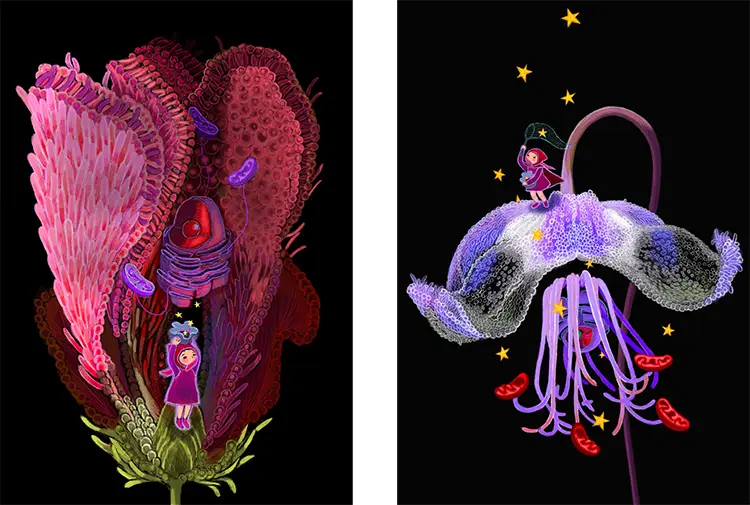
Visual Letters from a Quiet Universe
Among Ann Petite’s most personal creations is the painting Goodbyes, a piece rendered in acrylic on canvas. This work distills a complex emotional experience into a dark yet detailed visual field, illustrating a moment of parting that holds space for both sorrow and hope. Through its layered surfaces and nuanced textures, Goodbyes evokes the quiet tension of farewell while suggesting the possibility of future reunions. Acrylic, chosen for its quick-drying and versatile properties, enabled her to work with darker tones while maintaining sharp, intricate details—essential to the emotional atmosphere she intended to portray.
What makes Goodbyes especially significant is how it exemplifies Ann’s broader goal: to reveal the emotional undercurrents of seemingly scientific structures. The painting is less about literal representation and more about symbolic environment, where mood is embedded into microscopic patterns. Even in abstraction, the viewer can sense the familiarity of parting and the delicate string of hope that connects people across distance and time.
This approach defines her ongoing body of work, which grows not through rigid planning but through fluid, organic processes. She often compares her method to gardening: cultivating forms and allowing them to evolve through repetition, rhythm, and reaction. Within this ever-shifting landscape, her red-capped postman continues to traverse the unknown—delivering letters made of light, form, and memory.
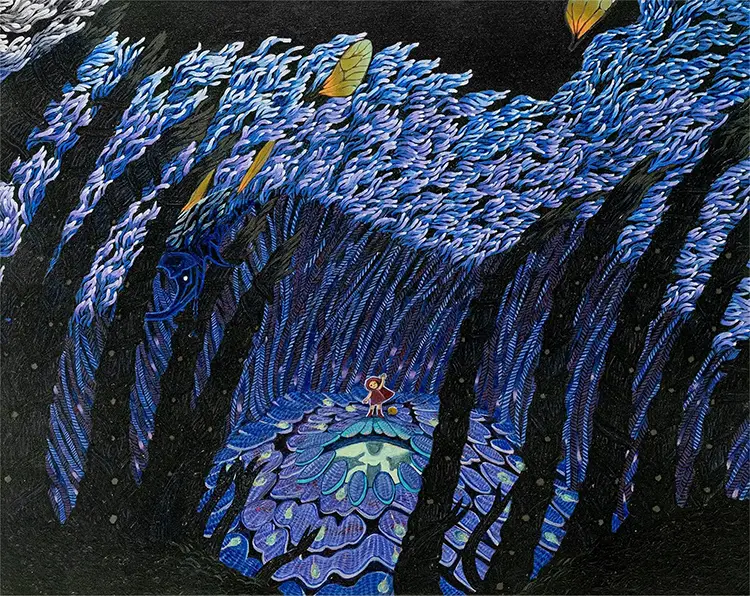
Ann Petite: Expanding the Scale of Intimacy
Balancing a demanding scientific career with a deeply immersive art practice requires both discipline and intuition. Ann Petite structures her creative time with intention, preserving evenings and weekends exclusively for painting. Her studio routine begins with reviewing sketches or color tests made during the week, a practice that keeps her creative momentum alive even when her time is limited. Each session is treated as a concentrated window of opportunity, where emotion and insight are quickly channeled before they dissipate.
This intensity shapes the emotional clarity of her work. Painting is not a repetitive routine for her—it is a state of focused translation, where fleeting feelings are rendered into layered surfaces. Her creative flow emerges from this urgency, guided by both scientific methodology and emotional resonance. The ability to switch between these two modes—analytical and expressive—is what lends her art its singular power and precision.
Looking forward, Ann is embarking on a large-format project measuring 80cm by 100cm, a significant expansion of her usual canvas size. This ambitious piece offers a new spatial depth in which her microscopic-inspired narratives can unfold. It allows her to immerse not just herself but also her viewers into the detailed, dreamlike spaces she constructs. The larger scale challenges her to scale up both the technical intricacies and the emotional subtleties that define her visual language, reinforcing her belief that the smallest things often carry the greatest weight.
